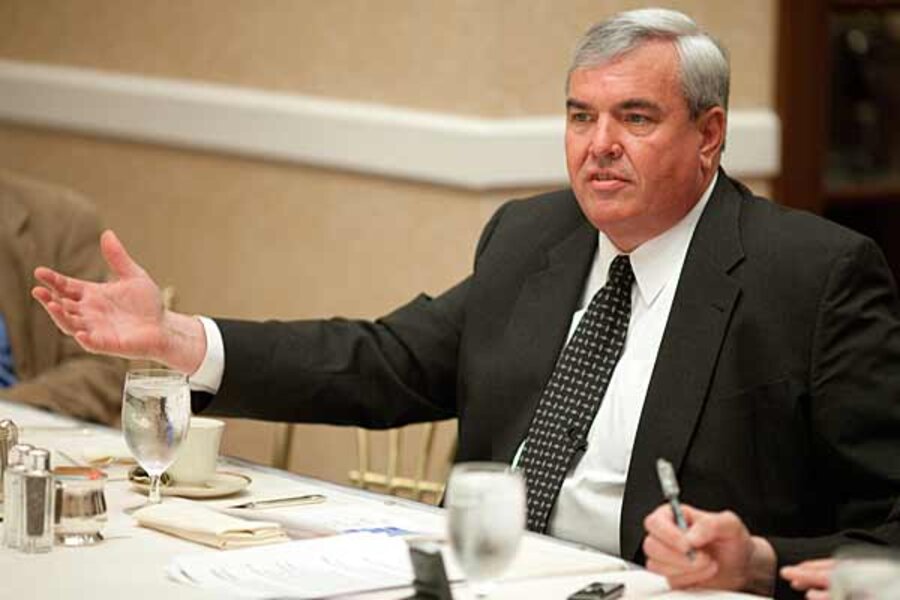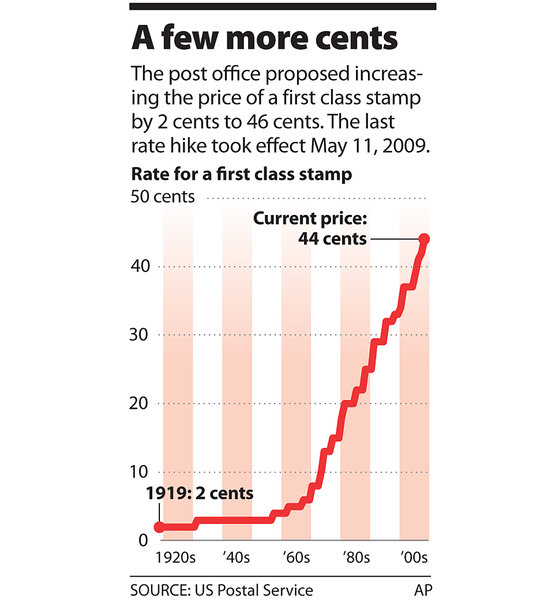Postal Service woes: First-class stamps may climb to 46 cents
Postage rates will increase in 2011, with first-class stamps rising from 44 cents to 46 cents starting in January, pending approval by the Postal Regulatory Commission, the US Postal Service announced Tuesday. It is the latest in a series of cost-cutting, revenue-raising moves the USPS has made as it confronts plummeting service, out-of-control health-care and pension costs, and a massive budget deficit.
After only three rate changes in the 1990s, the Postal Service has boosted rates for domestic letters on seven different occasions since 2000, including five separate increases in the past five years. Postcard rates will also go up two cents in 2011 under the proposal, to 30 cents apiece.
Several business groups expressed opposition to the price hike, calling it a new tax at a bad time. But Sen. Tom Carper (D) of Delaware, the chairman of the Senate subcommittee responsible for oversight of the Postal Service, showed grudging support for the planned rate increase.
"Like many other businesses, the Postal Service is looking at every option available to them to raise revenue and cut costs,” Sen. Carper said in a statement. “Unfortunately it seems like this will be one of many painful choices the Postal Service will have to make in the near future in order to right their fiscal house and adequately address the fiscal challenges they are facing.”
The Postal Service lost $1.9 billion through the first two quarters of 2010 and is facing a deficit of approximately $7 billion next year. Fueling the fire are a toxic combination of rising health-care and pension costs and a massive decline in revenue as Americans abandon mail for electronic communication. The USPS is required by law to pre-fund the $5.4 billion needed for its retired worker health benefits, rather than coming up with it on a pay-as-you-go basis, as other federal agencies do.
The number of pieces of mail has declined each year since 2006, with costs vastly outpacing Postal Service revenues over that time. Mail volume was down 12.7 percent in 2009 and fell another three points through the first six months of this year, dragging revenues down despite the boost in mail from the Census. In addition to the rate increases, the USPS has tried to adapt to the changing landscape by emphasizing its shipping products, an area of strength, while trimming its labor force – by over 170,000 in the past 10 years – as workers retire, and by closing some offices.
Postmaster General John Potter wants to make even more sweeping changes. This spring, he asked Congress once again to approve a plan to eliminate Saturday mail delivery, which he said would save the USPS over $3 billion a year. Last year, Mr. Potter earned the ire of a number of small towns when the Postal Service released a preliminary list of 667 “low-traffic” postal stations being examined for shutdown.
Potter is adamant about exploring all available options to help get the Postal Service out of the red. Before long-term fixes are in place, he said, the rate increase is necessary in the short-term. “There is no single one solution to the dire financial situation that the Postal Service faces,” he said. “These proposed rate changes are moderate and part of a fair and balanced approach to insuring mail service for all Americans.”
Related:






